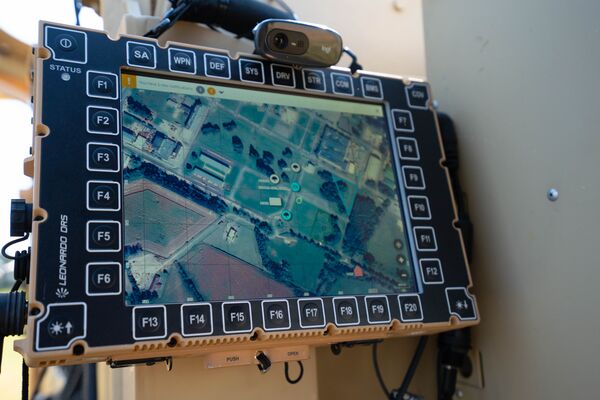
Systematic's SitaWare Frontline running on a DRS MFoCS tablet at the Everest experiment. The screen shows the common operating picture. (L3Harris UK)
An industry team has completed an initial experiment seeking to better exploit the information-sharing, resilience, and interoperability of land-centric military-off-the-shelf technologies.
The project took three months to build, but the experiment was conducted over two days at the Defence BattleLab in Dorset in mid-June. The event was attended by around 250 staff from the UK Ministry of Defence (MoD) looking to address requirements under Project Morpheus's plan to replace the British Army's Bowman tactical communications system and the Land Cyber Electro Magnetic Activities group.
The industry team comprised defence prime contractors L3Harris and Leonardo DRS, command-and-control (C2) software specialist Systematic, satellite communications companies NSSLGlobal and Inmarsat, and electronic defence engineering firm Exsel Group.
Ian Blower, regional managing director, UK&I/SE at L3Harris, told Janes that the objective of the experiment – named Everest – was to bring together the companies to create a fieldable C2 network. The centrepiece of that network was the generation of a common operating picture (COP) built from a range of sensors and disparate communications bearers.
Blower said that using existing or soon-to-be delivered systems, the Everest team was able to demonstrate the latent unused capability of those systems, while also demonstrating the impact of aggregated data from a range of systems and the advantage that brings in developing a fused COP.
Looking to read the full article?
Gain unlimited access to Janes news and more...







